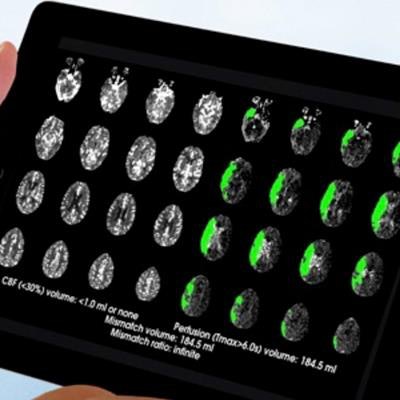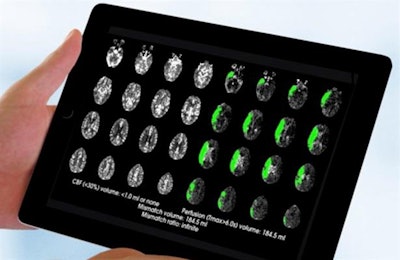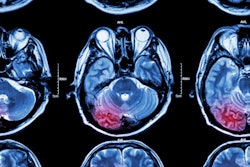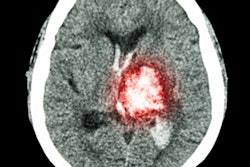
Perfusion MR and CT images can help clinicians identify stroke patients who could benefit from therapy later than previously thought -- up to 16 hours after the event, according to a study published online January 24 in the New England Journal of Medicine.
A team led by Dr. Gregory Albers of Stanford University found that physically removing brain clots up to 16 hours after symptom onset in certain patients led to improved outcomes, compared with the use of standard medical therapy. Albers and colleagues also presented their study results at the 2018 International Stroke Conference in Los Angeles.
The research was part of the Endovascular Therapy Following Imaging Evaluation for Ischemic Stroke 3 (DEFUSE 3) trial, which was conducted at 38 centers across the U.S. and facilitated by StrokeNet, a network of hospitals that provides research infrastructure for multisite clinical trials. StrokeNet is supported by the U.S. National Institute of Neurological Disorders and Stroke (NINDS).
 Advances in brain imaging technology may help identify more patients who are eligible for stroke treatment. Image courtesy of Dr. Gregory Albers.
Advances in brain imaging technology may help identify more patients who are eligible for stroke treatment. Image courtesy of Dr. Gregory Albers.An ischemic stroke occurs when a cerebral blood vessel becomes blocked, cutting off the delivery of oxygen and nutrients to brain tissue. Clinicians have long thought that the area surrounding the core has the potential to be saved based on how quickly the blood flow can be restored. But over the past 20 years, researchers have been investigating whether brain imaging could detect patients with tissue that can still be salvaged by removing the blockage.
Albers and colleagues used automated software (Rapid, iSchemaView) to analyze perfusion MRI or CT scans to identify patients thought to have salvageable tissue. Study participants were randomized to receive endovascular thrombectomy -- the physical removal of the blockage -- plus standard medical therapy or medical therapy alone. Endovascular thrombectomy is currently indicated for use up to six hours following the onset of stroke.
The researchers discovered that 45% of patients treated with the clot removal procedure within the 16-hour time frame achieved functional independence 90 days after treatment, compared with 17% in the control group. Thrombectomy was also associated with improved survival: 14% of the treated group died within 90 days of the study, compared with 26% in the control group.
"Although stroke is a medical emergency that should be treated as soon as possible, DEFUSE 3 opens the door to treatment even for some patients who wake up with a stroke or arrive at the hospital many hours after their initial symptoms," Albers said in a statement released by the NINDS.





















